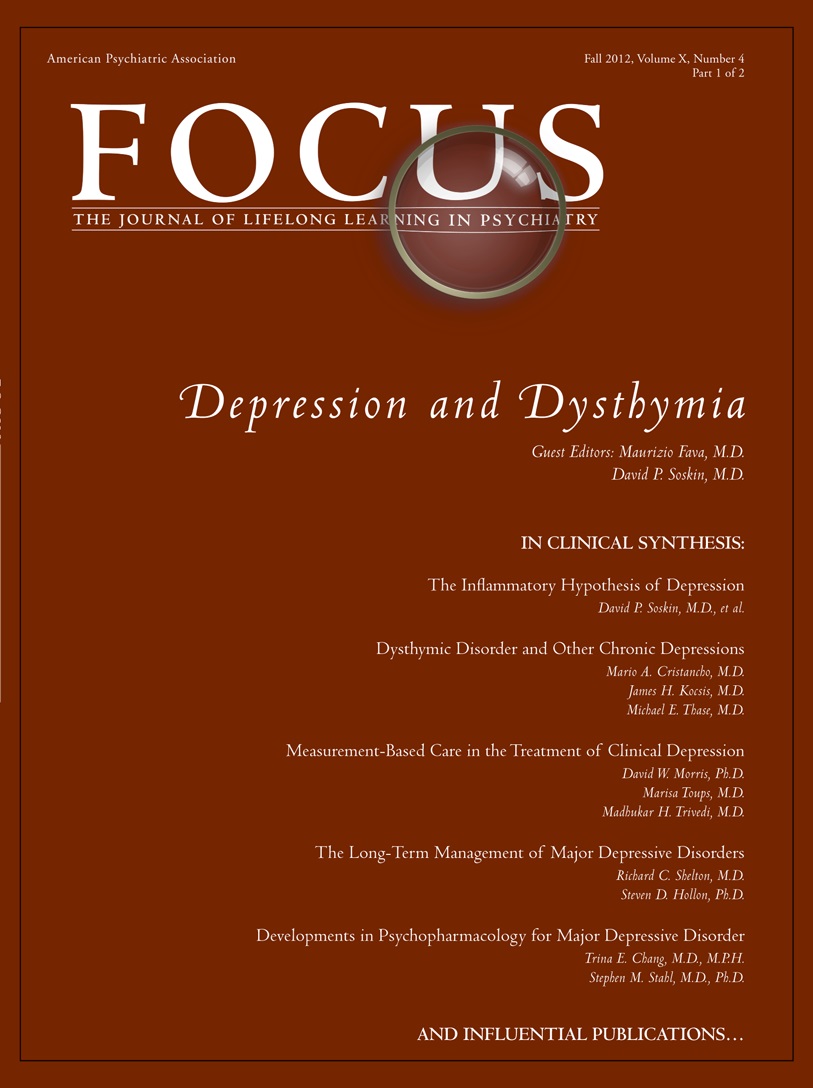What Did STAR✫D Teach Us? Results From a Large-Scale, Practical, Clinical Trial for Patients With Depression
Abstract
The authors provide an overview of the Sequenced Treatment Alternatives to Relieve Depression (STAR*D) study (www.star-d.org), a large-scale practical clinical trial to determine which of several treatments are the most effective “next-steps” for patients with major depressive disorder whose symptoms do not remit or who cannot tolerate an initial treatment and, if needed, ensuing treatments. Entry criteria were broadly defined and inclusive, and patients were enrolled from psychiatric and primary care clinics. All participants began on citalopram and were managed by clinic physicians, who followed an algorithm-guided acute-phase treatment through five visits over 12 weeks. At the end of each sequence, patients whose depression had not fully remitted were eligible for subsequent randomized trials in a sequence of up to three clinical trials. In general, remission rates in the study clinics were lower than expected, suggesting the need for several steps to achieve remission for most patients. There was no clear medication “winner” for patients whose depression did not remit after one or more aggressive medication trials. Both switching and augmenting appeared to be reasonable options when an initial antidepressant treatment failed, although these two strategies could not be directly compared. Further, the likelihood of remission after two vigorous medication trials substantially decreased, and remission would likely require more complicated medication regimens for which the existing evidence base is quite thin. STAR*D demonstrated that inclusion of more real-world patients in clinical trials is both feasible and informative. Policy implications of the findings, as well as the study’s limitations, are discussed.
(Reprinted with permission from Psychiatric Services, 2009;60:1439–1445)



